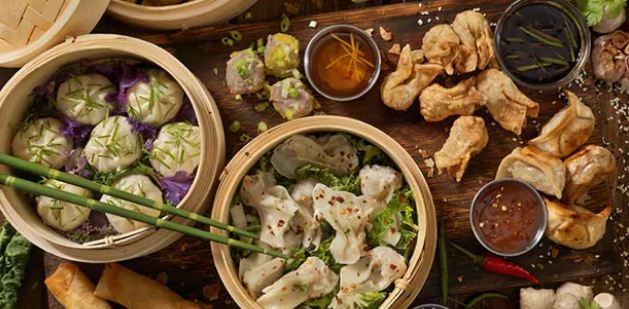By Foodie
Momos comprise the most ubiquitous food category in India today, though it is not exactly Indian in origin. Today, it is available almost in every part of this sub-continent, and is possibly one of the most enjoyable fast food category dishes you can have. Momos in India are available in the vegetarian category, as well as in the non-vegetarian category and is further sub divided into steamed (which is the original) and pan fried (an Indian adaptation).
Let us take you through a brief history of this delicacy and teach you how to make them at home.
The word momo comes from the Tibetan word ‘Mog Mog,’ which literally means a filled bun. In turn, the word Momos is a corrupted Chinese version of the Tibetan term. The dish is said to have spread to various parts of Asia via travelling Chinese and Newari merchants.
In Tibet, momos are prepared with yak meat, tomato, garlic, ginger, dried chilli and oil-based filling. Both steamed and fried versions of the dish are enjoyed along with a chilli paste. The utensil used for cooking moms was called Mucktoo.
It is largely assumed that, after the Chinese attacked the region in 1959, following the exodus of Tibetans from Tibet. The exiled Tibetans then settled in various parts of India, including Dharamshala, Sikkim, Ladakh, Darjeeling, Kolkata and Delhi.
In Arunachal Pradesh, the Monpa and Sherdukpen tribes that belong to the western districts of Tawang as well as Kemang do, however, have momos in their cuisines. Here the dish is stuffed with minced pork, mustard leaves, and green vegetables.
It is a myth that momo is a staple dish for people in the north-east. In fact, people from the north-east like the Khasis, Nagas, Arunachalis, Manipuris, Mizos and Tripuris have little to do with the momo. Perhaps, it is only among Arunachal Pradesh’s Monpa and Sherdukpen tribes, who live in the West Kameng and Tawang districts and share a border with Tibet, where momos are a part of the diet.


Their version is usually stuffed with minced pork and mustard leaves or other green vegetables and served with chilli paste.
Eventually, the momo-fever gripped the entire nation, and now it is savored not only by college students but also by people of all ages and regions. Today, it’s seen more as fast food which can be whipped up in a jiffy than an exotic Tibetan dish. In other words, momos are for everyone! India has adopted it like its very own. Besides Tibetans, the dish is said to have spread to various parts of Asia via travelling Chinese and Newari (a region in Nepal) merchants as well.
The momo, which entered China through Tibet, and then spread through the Silk Route to other parts of the sub-continent, has similar cousins in South-east and Central Asia. China has the Baozi, Jiaozi and the Mantou; Japan has Gyozo; the Mongolians have the Buuz; the Koreans and the Turkish have the Mandu.
Ingredients
For the dumpling dough
- ⅓ cup chopped french beans and ¼ cup
- Divide the dough in two parts.
- Make a 7 to 8 inches log from each part. cut the log into equal slices.
- Shape into a ball of each dough piece and keep them covered with a moist napkin.
- Take each dough ball and put it on a lightly dusted board. Roll each dough ball into a thin circle of about 3 to 4 inches diameter.
- The edges have to be thin and the center has to be thick.
- Apply water with your finger tip or with a small pastry brush towards the circumference. This is an optional step.
- Lift one side of the edge and start pleating.
- A pleated and shaped dim sum.
- Steaming veg momos
- Grease a steamer pan with some oil.
- Arrange them in the pan, keeping space between them.
- Steam them in an electric cooker or a steamer pan.
- Add 2 cups of water in the pot or pan while steaming over and steam for 5 to 6 minutes till the outer dough becomes transparent.
- Don’t overcook as then the outer dough becomes dense and chewy. The steaming time may vary upon the thickness of momos’ cover.
- When you touch the momo then the dough should not feel sticky to you. This means they are done and the momos will have a transparent look.
- Serve veg momos hot with momos chutney or red chilli-garlic chutney, spicy schezwan sauce or tomato sauce. They also go best with a spicy sauce and should be eaten hot.





















